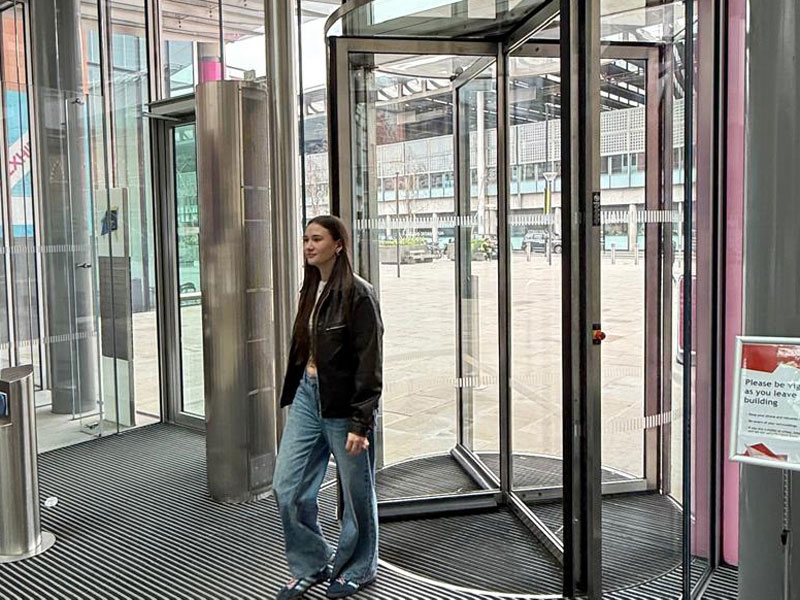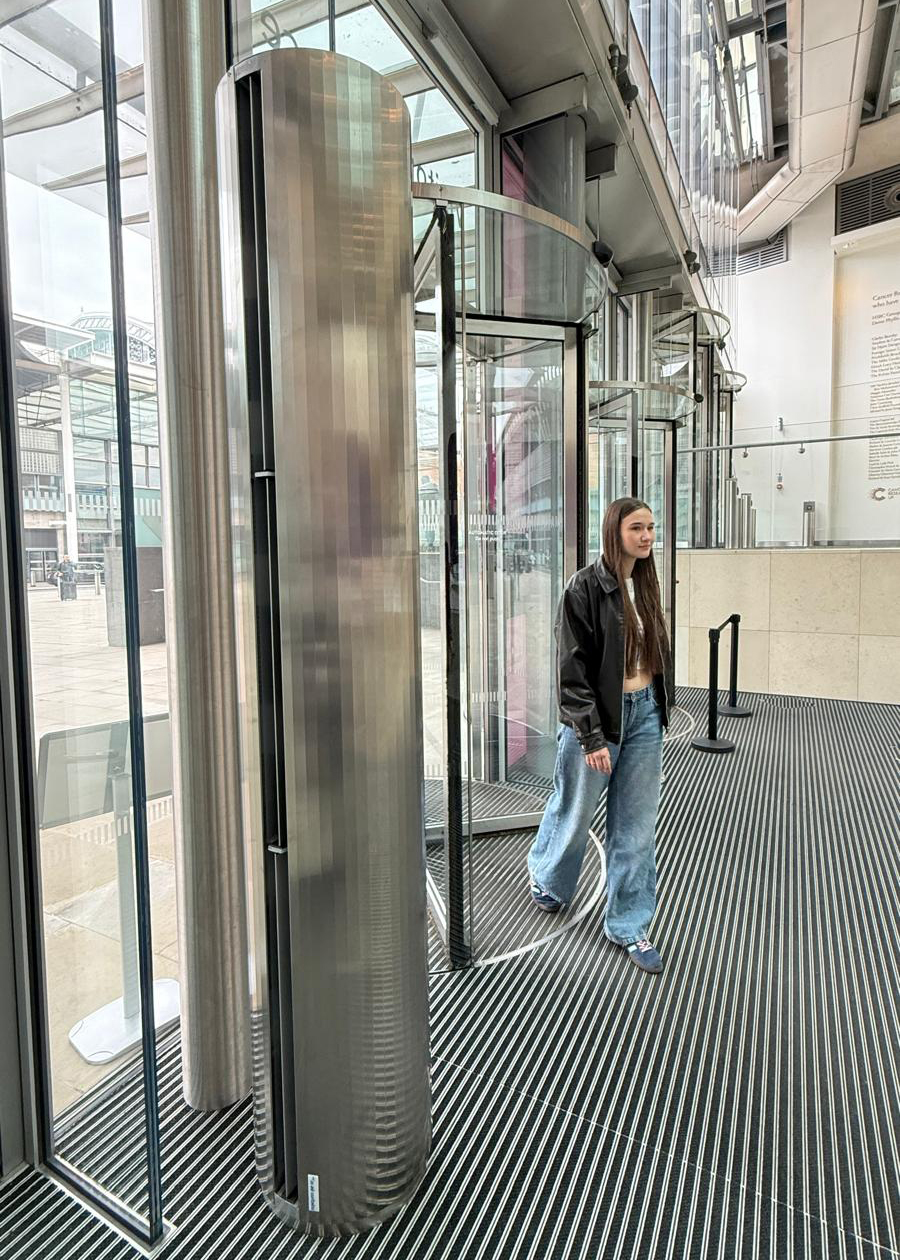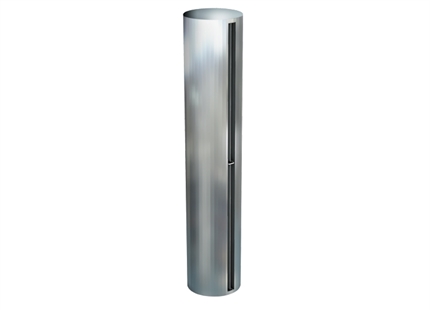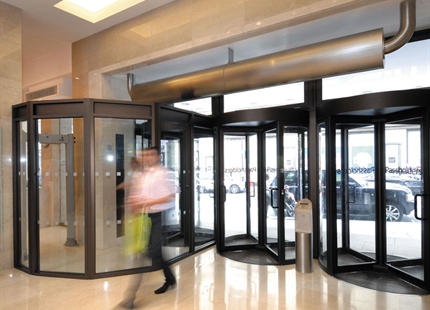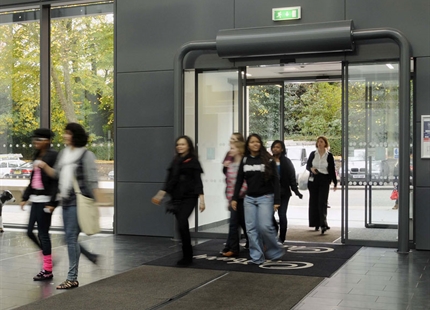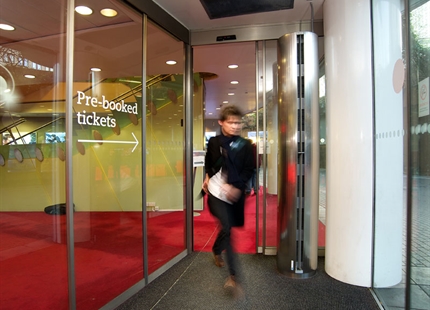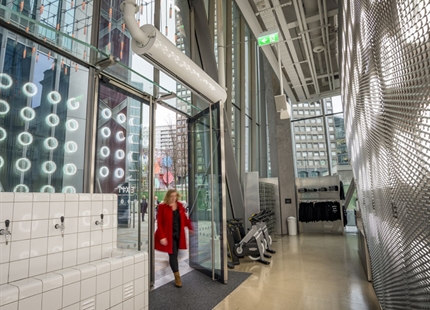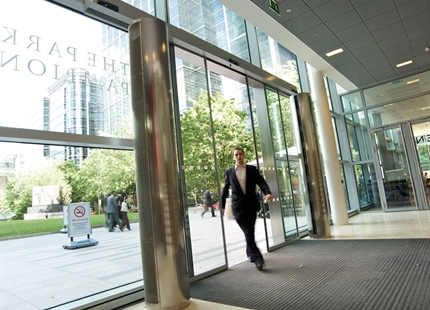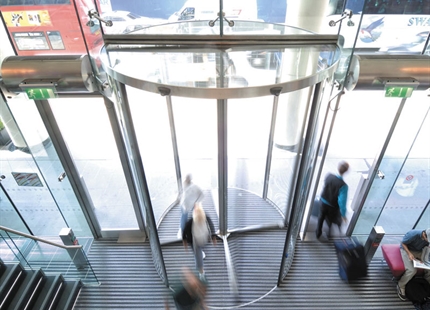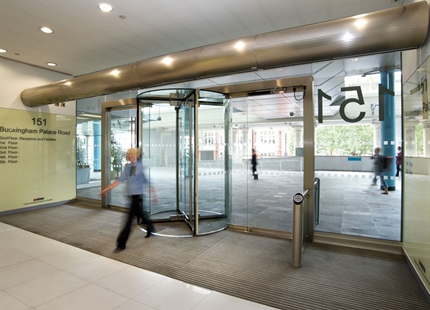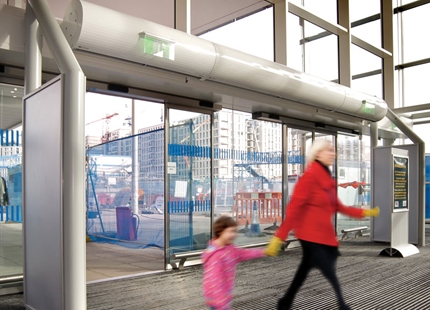JS air curtain makes a striking entrance at the Francis Crick Institute
The Francis Crick Institute in London is one of Europe’s leading biomedical research centres - and a landmark of modern architecture. With its glass-fronted facade, exposed steel elements, and open, light-filled spaces, the building exemplifies cutting-edge design and scientific innovation.
To support this high standard of design, JS Air Curtains supplied a stylish Rund air curtain for the Institute’s main entrance. Selected for its minimalist, cylindrical form and brushed stainless steel finish, the Rund model was installed vertically, blending seamlessly with the contemporary interior.
Tony Fleming, Managing Director of JS Air Curtains, commented, “The Francis Crick Institute needed an entrance solution that wouldn’t compromise on appearance or performance. The Rund air curtain delivers both - its sleek stainless steel finish enhances the architectural design, while providing effective protection from draughts and maintaining a comfortable indoor climate.”
While the aesthetic appeal was a key consideration, performance was equally important. The Rund air curtain creates a powerful, invisible barrier of air across the doorway, preventing cold air from entering and warm air from escaping. This not only improves comfort in the reception area but also supports energy efficiency and indoor air quality.
The result is an entrance that is both practical and visually refined - a perfect match for the Crick Institute’s ethos of excellence in both science and design.
The Rund air curtain has an extremely attractive, cylindrical design and can be fitted with a range of mounting and suspension options to complement a building’s architectural style. At the Francis Crick Institute, the unit is installed vertically in a brushed stainless steel finish, but the Rund is also available in any RAL colour to suit different aesthetics. Mounting options include round, goal post-style supports that span an entrance, or ceiling and wall-mounted fixtures using chains or poles. Units can be positioned horizontally above doorways or vertically at the sides, as at the Crick Institute. This flexibility makes the Rund ideal for high-end interiors where visual impact is as important as environmental control.


